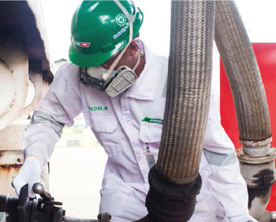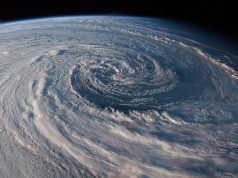T he oil and energy company, Puma Energy has recently commissioned ‘The Changing Face of Asia Pacific’, this report centres on the prospects for the Asia Pacific region, home to 50% of the world’s population, and for several decades the most dynamic region of the global economy. It focuses on the region’s sources of future growth, its potential, and the various challenges it faces, including meeting substantive infrastructure and energy supply needs. It maps out investment and broader business opportunities for global energy companies such as Puma Energy.
Over recent decades the world economy has been transformed by the globalisation of international trade and finance, the IT rev-olution, the evolution of a transcontinental oil market, and a shifting balance of eco-nomic and political power from the West to the East. The Asia Pacific region has been at the very core of these seismic developments and become the global economy’s primary locomotive. It has offered up the remark-able rise of the Asian Tigers, the emergence of both China and India as global powers, and the advent of an increasingly intricate and dynamic web of trade linkages stretch-ing across the region. Asia’s average annual growth rate over the past 10 years has con-sistently exceeded the global average.
Underpinned by timely and aggressive policy stimulus, Asia Pacific’s post-crisis re-covery has been rapid by the standards of the more mature OECD economies. The region’s GDP is already some 40% bigger than on the eve of the downturn, and domestic demand rather than exports has been instrumental in driving the expansion. China’s prominence in the region and the global economy in gen-eral tends to capture most of the headlines, but there is much more to the Asian story than this. The vibrant recovery has extend-ed right across the region; recent years have seen South East Asia outperforming the es-pecially trade-dependent newly-industrialis-ing economies, while resource-rich Australia has enjoyed a mining boom that is now in-creasingly bearing fruit in terms of its trade performance. In essence, Asia Pacific has left the West behind since the Global Financial Crisis.
The Asia Pacific region produces around 30% of world GDP and accounts for around 40% of global energy demand. Over the com-ing 20 years the region’s demand for ener-gy stands to increase dramatically, by some 50%, and oil by 40%. In the less developed economies of Asia Pacific, the requirements will be greater still: oil demand is expected to double and oil imports to treble. OECD ener-gy demand, by contrast, is projected scarcely to increase, and the demand for oil to fall, by around 20%.
Notwithstanding the region’s impressive performance and its being the envy of much of the world, there have latterly been signs of slowing underlying growth potential and the region faces significant challenges if its potential is to be fulfilled.
A number of economies are at risk of falling into the so-called ‘Middle-Income Trap’, while others risk becoming over-re-liant on credit to drive growth. Efforts both to nurture the right balance of aggregate demand and to encourage appropriate sup-ply-side reforms are vital. This process will prove complex, demanding, multi-faceted and open-ended.
Successful reform means getting a lot of things right. Priorities are developing the region’s institutions, putting in place appro-priate incentive structures, investing heavily in infrastructure and technology, improving the quality of public spending, further devel-oping trade linkages, and encouraging the development of the region’s financial system.
In the case of Puma Energy, “recent ac-quisitions in Australia, Indonesia and Viet-nam, have given us a strong foothold in some of the fastest-growing markets, where our proven ability to support infrastructure and industry growth give us a competitive edge,” said Robert Jones, Chief Operating Officer, Asia Pacific and Middle East, Puma Energy.
The report was the third study in a series of reports in collaboration with independent economic consultants Llewellyn Consulting.










